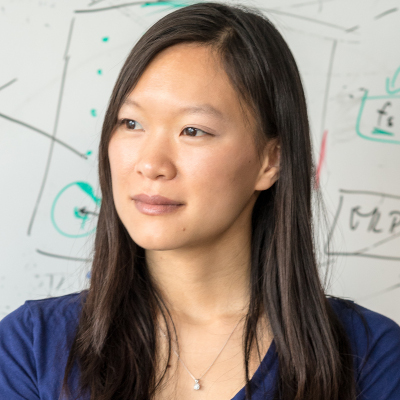Enhancing Robot Perception and Interaction Through Structured Domain Knowledge
Abstract: Despite the advancements in deep learning driven by increased computational power and large datasets, significant challenges remain. These include difficulty in handling novel entities, limited mechanisms for human experts to update knowledge, and lack of interpretability, all of which are crucial for human-centric applications like assistive robotics. To address these issues, we propose leveraging [...]
Dynamic Multi-Objective Trajectory Planning for Mobile Robots
Abstract: Robotic explorers play a crucial role in acquiring data from areas that are difficult or impossible for humans to reach. Whether for planetary exploration, search and rescue missions, agriculture, or other scientific exploration tasks, these robots can utilize pre-existing knowledge of the terrain to navigate effectively. In search- and coverage-oriented scenarios, robots must consider [...]
From Understanding to Interacting with the 3D World
Abstract: Understanding the 3D structure of real-world environments is a fundamental challenge in machine perception, critical for applications spanning robotic navigation, content creation, and mixed reality scenarios. In recent years, machine learning has undergone rapid advancements; however, in the 3D domain, such data-driven learning is often very challenging under limited 3D/4D data availability. In this talk, [...]
Motion planning for manipulation under pose uncertainty using contacts
Abstract: Numerous manipulation tasks, such as plug insertion and pipe assembly, demand an extremely high level of precision in pose estimation. Even minor errors, on the order of 2mm, can lead to task failure. While robots often rely on vision for object detection and localization, achieving consistent, high-precision localization using visual methods is not always [...]
Robust Off-road Wheel Odometry with Slip Estimation
Abstract: Wheel odometry is not often used in state estimation for off-road vehicles due to frequent wheel slippage, varying wheel radii, and the 3D motion of the vehicle not fitting with the 2D nature of integrated wheel odometry. This paper proposes a novel 3D preintegration of wheel encoder measurements on manifold. Our method additionally estimates [...]
Composable Optimization for Robotic Motion Planning and Control
Abstract: Contact interactions are pervasive in real-world robotics tasks like manipulation and walking. However, the non-smooth dynamics associated with impacts and friction remain challenging to model, and motion planning and control algorithms that can fluently and efficiently reason about contact remain elusive. In this talk, I will share recent work from my research group that takes an “optimization-first” [...]
Optimal Modular Robot Design for Mobile Manipulation in Agriculture
Abstract: Although agriculture is a highly mechanized industry, numerous sectors like horticulture and floriculture heavily depend on manual labor because they require safe handling of plants and produce that can only be left to humans. However, many research and commercial robots have succeeded in several challenging dexterous manipulation tasks like harvesting, pruning, and plant health [...]
Aligning Robot Task and Interaction Policies to Human Values
Abstract: The value alignment problem considers how robots can learn to behave in accordance with human values. Today, robot learning paradigms enable humans to provide data (e.g., preference labels or demonstrations), which the robot uses to update its behavior (e.g., reward model or policy) to be closer to the human’s values. However, the current paradigm [...]
Learned Imaging Systems
Abstract: Computational imaging systems are based on the joint design of optics and associated image reconstruction algorithms. Of particular interest in recent years has been the development of end-to-end learned “Deep Optics” systems that use differentiable optical simulation in combination with backpropagation to simultaneously learn optical design and deep network post-processing for applications such as hyperspectral [...]
Accelerating Robot Task Learning with Large Pretrained Models and Internet Data
Abstract: Large pre-trained models and internet data sources are key to general and efficient robot task learning. However, learning contact-rich behaviors, semantic task constraints, and robust task planning from internet data sources remains an open challenge. This proposal seeks to make progress towards a general robot task learning system leveraging pre-trained models and internet data. [...]
A Modularized Approach to Vision-based Tactile Sensor Design Using Physics-based Rendering
Abstract: Touch is an essential sensing modality for making autonomous robots more dexterous and allowing them to work collaboratively with humans. In particular, the advent of vision-based tactile sensors has resulted in efforts to design them for different robotic manipulation tasks. However, this design task remains a challenging problem. This is for two reasons: first, [...]
Towards Universal Place Recognition
Title: Towards Universal Place Recognition Abstract: Place Recognition is essential for achieving robust robot localization. However, current state-of-art systems remain environment/domain-specific and fragile. By leveraging insights from vision foundation models, we present AnyLoc, a universal VPR solution that performs across diverse environments without retraining or fine-tuning, significantly outperforming supervised baselines. We further introduce MultiLoc, and enable [...]
Enhancing Model Performance and Interpretability with Causal Inference as a Feature Selection Algorithm
Abstract: Causal inference focuses on uncovering cause-effect relationships from data, diverging from conventional machine learning which primarily relies on correlation analysis. By identifying these causal relationships, causal inference improves feature selection for predictive models, leading to predictions that are more accurate, interpretable, and robust. This approach proves especially effective with interventional data, such as randomized [...]
ARPA-H and America’s Health: Pursuing High-Risk/High-Reward Research to Improve Health Outcomes for All
Dr. Andy Kilianski will provide an overview of ARPA-H, a new U.S. government funding agency pursuing R&D for health challenges. He will review the unique niche occupied by ARPA-H within the Department of Health and Human Services and how ARPA-H is already partnering with academia and industry to transform health outcomes across the country. Discussion [...]
Carnegie Mellon University
GNSS-denied Ground Vehicle Localization for Off-road Environments with Bird’s-eye-view Synthesis
Abstract: Global localization is essential for the smooth navigation of autonomous vehicles. To obtain accurate vehicle states, on-board localization systems typically rely on Global Navigation Satellite System (GNSS) modules for consistent and reliable global positioning. However, GNSS signals can be obstructed by natural or artificial barriers, leading to temporary system failures and degraded state estimation. On the [...]
Scaling up Robot Skill Learning with Generative Simulation
Abstract: Generalist robots need to learn a wide variety of skills to perform diverse tasks across multiple environments. Current robot training pipelines rely on humans to either provide kinesthetic demonstrations or program simulation environments with manually-designed reward functions for reinforcement learning. Such human involvement is an important bottleneck towards scaling up robot learning across diverse [...]
Simulation as a Tool for Conspicuity Measurement
Abstract: The use of unmanned aerial vehicles (UAVs) for time critical tasks is becoming increasingly popular. Operators are expected to use information from these swarms to make real-time and informed decisions. Consequently, detecting and recognizing targets from video is extremely pivotal to the success of these systems. At greater altitudes or with more vehicles, this [...]
VP4D: View Planning for 3D and 4D Scene Understanding
Abstract: View planning plays a critical role by gathering views that optimize scene reconstruction. Such reconstruction has played an important part in virtual production and computer animation, where a 3D map of the film set and motion capture of actors lead to an immersive experience. Current methods use uncertainty estimation in neural rendering of view [...]
Unlocking Generalization for Robotics via Modularity and Scale
Abstract: How can we build generalist robot systems? Looking at fields such as vision and language, the common theme has been large scale end-to-end learning with massive, curated datasets. In robotics, on the other hand, scale alone may not be enough due to the significant multimodality of robotics tasks, lack of easily accessible data and [...]
Automating Annotation Pipelines by leveraging Multi-Modal Data
Abstract: The era of vision-language models (VLMs) trained on large web-scale datasets challenges conventional formulations of “open-world" perception. In this work, we revisit the task of few-shot object detection (FSOD) in the context of recent foundational VLMs. First, we point out that zero-shot VLMs such as GroundingDINO significantly outperform state-of-the-art few-shot detectors (48 vs. 33 AP) [...]
Leveraging Affordances for Accelerating Online RL
Abstract: The inability to explore environments efficiently makes online RL sample-inefficient. Most existing works tackle this problem in a setting devoid of prior information. However, additional affordances may often be cheaply available at the time of training. These affordances include small quantities of demo data, simulators that can reset to arbitrary states and domain specific [...]
Dynamic Route Guidance in Vehicle Networks by Simulating Future Traffic Patterns
Abstract: Roadway congestion leads to wasted time and money and environmental damage. One possible solution is adding more roadway capacity, but this can be impractical especially in urban environments and still may not make up for a poorly-calibrated traffic signal schedule. As such, it is becoming increasingly important to use existing road networks more efficiently. [...]
Safe, Robust and Adaptive Model Learning for Agile Robots: Autonomous Racing
Abstract: In recent years there has been a rapid development in agile robots capable of operating at their limits in dynamic environments. Autonomous racing and recent developments in it also spurred by competitions such as the Indy Autonomous Challenge, A2RL, and F1Tenth have shown how modern autonomous control algorithms are capable of operating racecars at [...]
Improving Lego Assembly with Vibro-Tactile Feedback
Abstract: Robotic manipulation is an important area of research to improve the level of efficiency and autonomy in manufacturing processes. Due to the high precision and repeatability of industrial robot arms, robotic manufacturing tasks are dominated by simple pick, place, and peg insertion actions performed in a highly structured environment. Lego blocks are an excellent [...]
Robots Crossing Boundaries
Abstract: Over the last 50 years, autonomous robots have made the leap from being novel research contributions in university labs to becoming the fundamental technology upon which companies are built. While they traditionally have belonged to the engineering and computer science disciplines, robots have now crossed into other areas of study and research - making impacts in oceanography, geology, archaeology, biomechanics and biology. [...]
DeltaWalker: A Soft, Linearly Actuated Delta Quadruped Robot
Abstract: Quadruped robots offer a versatile solution for navigating complex terrain, making them valuable for applications such as industrial automation or search and rescue. Although quadrupeds are more complex than bipeds, they are easier to balance and control and require fewer joints to actuate compared to hexapods. Traditional quadruped designs, however, often feature complex leg [...]
Propagative Distance Optimization for Constrained Inverse Kinematics
Abstract: This work investigates a constrained inverse kinematic (IK) problem that seeks a feasible configuration of an articulated robot under various constraints such as joint limits and obstacle collision avoidance. Due to the high-dimensionality and complex constraints, this problem is often solved numerically via iterative local optimization. Classic local optimization methods take joint angles as [...]
Advancing Legged Robot Agility: from Video Imitation to GPU Acceleration
Abstract: Achieving human and animal-level agility has been a long-standing goal in robotics research. Recent advancements in numerical optimization and machine learning have pushed legged systems to greater capabilities than ever before, enabling black flips, parkour, and manipulation of heavy objects. Despite these exciting developments, this thesis identifies two key limitations of current legged robot [...]






















